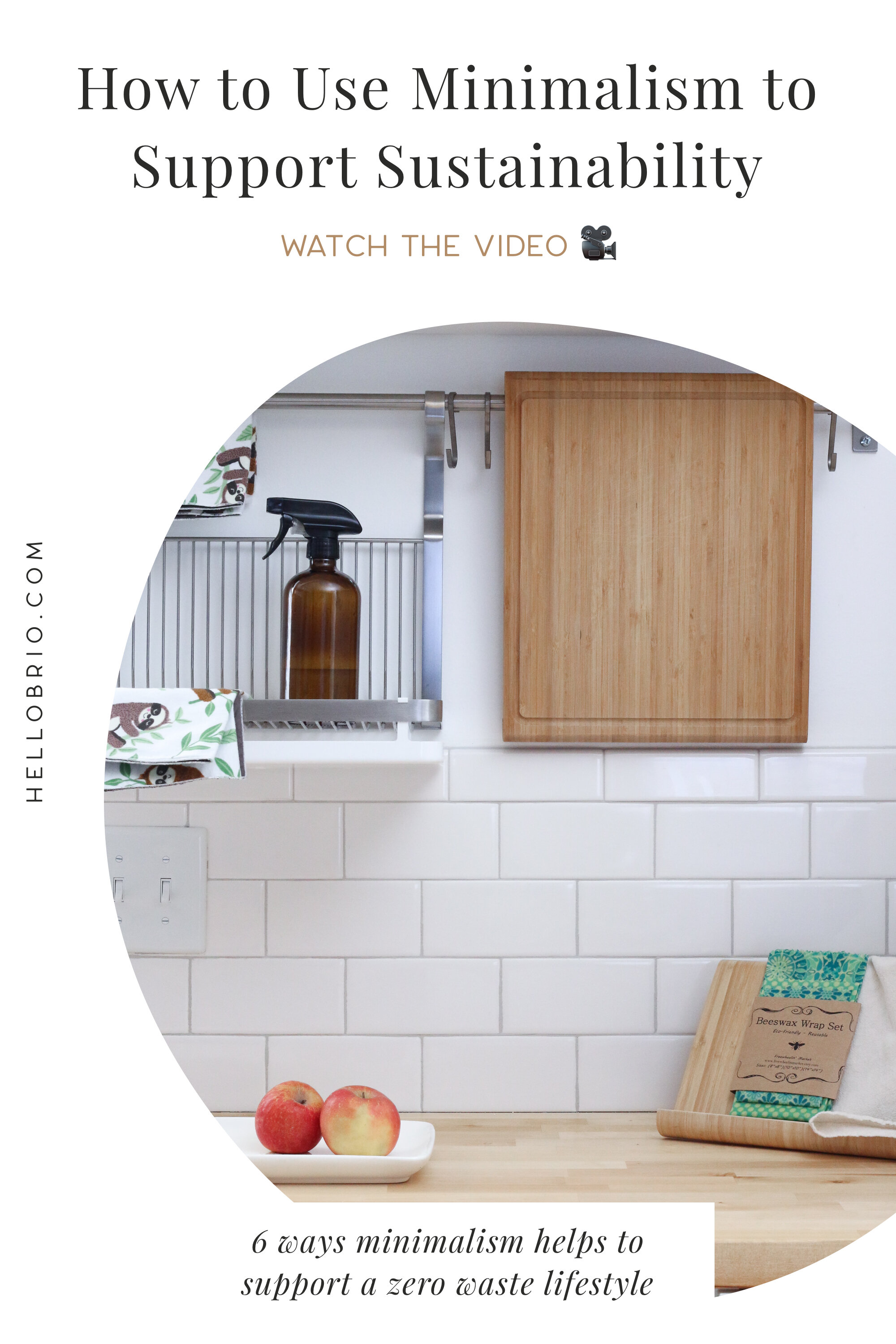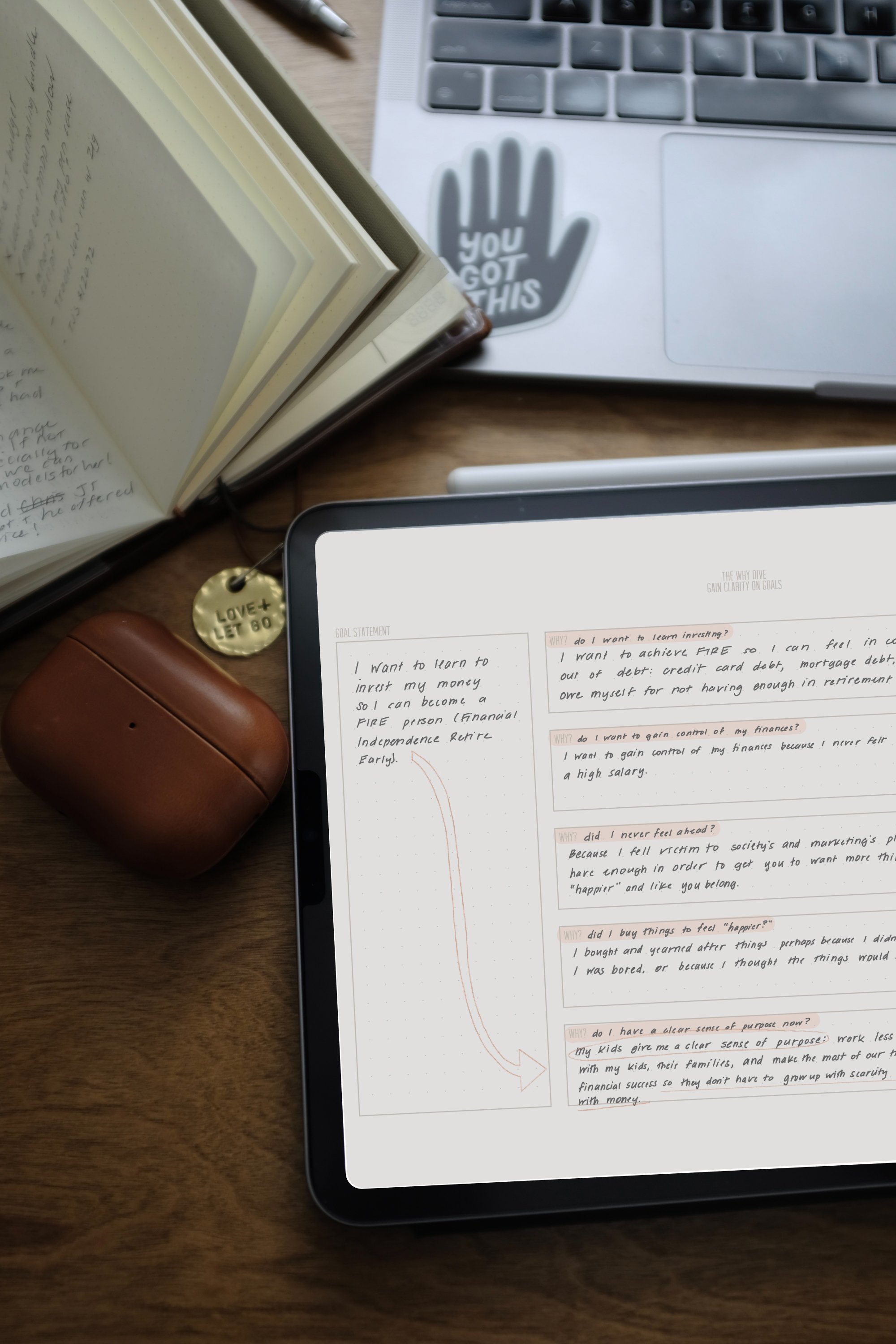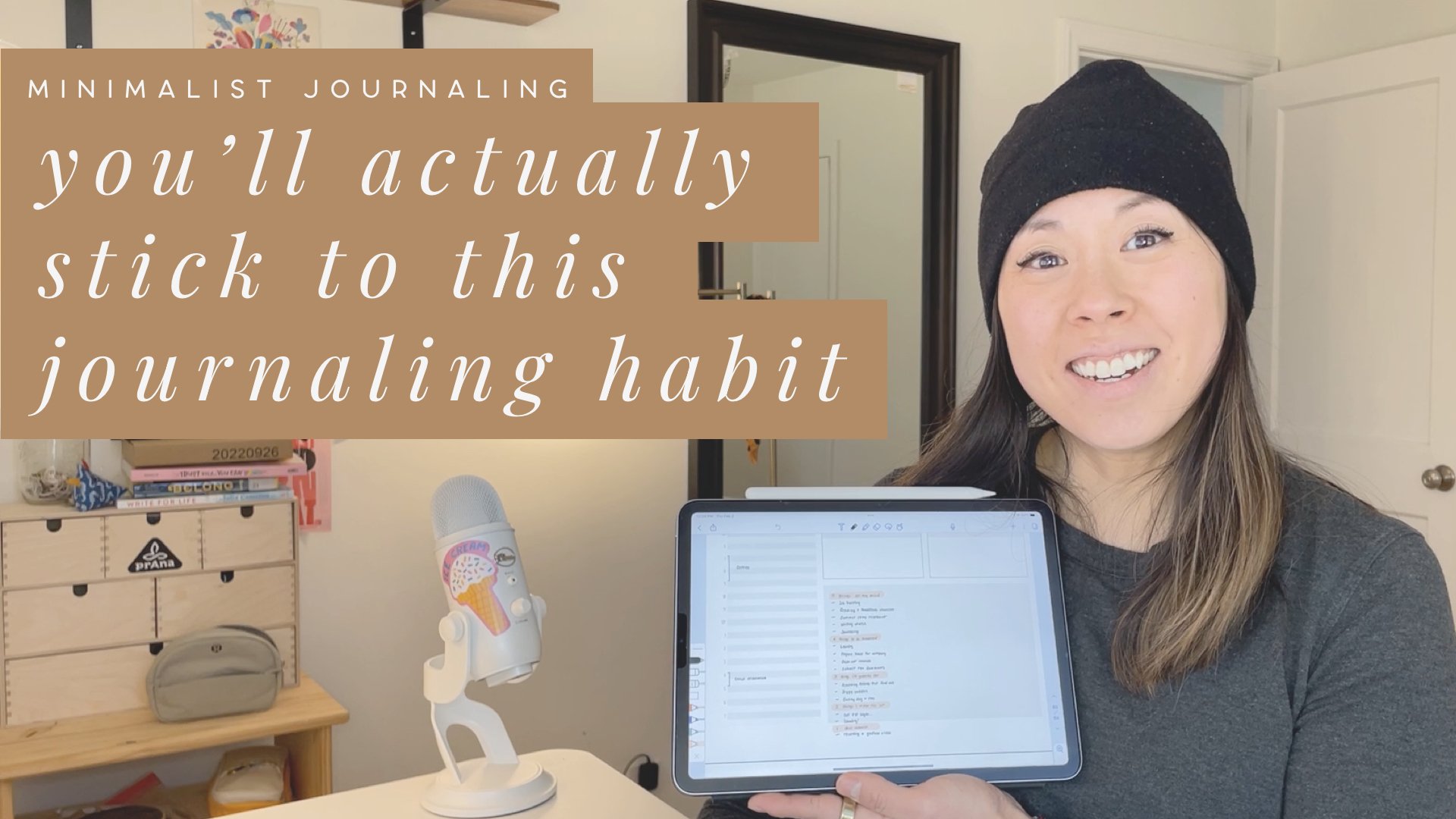Six Ways To Use Minimalism To Support a Zero Waste Lifestyle
How does minimalism and zero waste go together?
The beautiful thing about minimalism is that it naturally supports being zero waste—or nearo waste, as I like to call it (near zero waste). Many people who are interested in minimalism are also interested in sustainability, since they often go hand-in-hand.
If you buy less, you're demanding less of the economy, which will create less demand. Sure, it'll take a lot of consumers to cut back on the products they buy in order to make a difference in the supply chain, but every little bit helps.
"Reduce, reuse, recycle" is in that order for a reason.
Reduce the amount of stuff you have and use.
Reuse things where you can.
Recycle is last because even though it's a solution, it's not a perfect one. Recycling requires a lot of energy, creates a lot of waste, costs a lot, and recycled materials become downgraded with every cycle.
Here are six ways you can change your consumption habits in order to be more minimal and therefore zero waste and sustainable.
Pin for later
Watch the video and read through the post; let me know what you think in the comments!
1. Unsubscribe
It's kinda crazy what a little unsubscribing can do.
I somewhat recently found out about an app that allows you to request to be unsubscribed from various sources of junk mail. Just snap a picture of the offensive mail and type in your mailing address, and the app will do the leg work for you. Junk mail be gone!
The other thing that can inadvertently help you to reduce waste? Unsuscribing from marketing email newsletters.
Guess what—this will also help you spend less money and make your bank account happier.
The less you buy online, the less waste you will create. You'll reduce the plastic packaging, paper receipts, and the gas and energy of transportation it takes for your item to arrive on your doorstep. (I'm personally still working on this one: Amazon makes it too easy for a busy mom.)
It turns out that when you still need something—like a pair of workout pants—that you’ll be prompted to buy them because of the need. You’ll be able to go to your favorite store, find a coupon online, and buy them intentionally.
This is a vastly more intentional approach than responding to a marketing email prompting you to buy something you may not need.
2. Hang in There With Your Old Items
Your old items still work. Hang onto them!
For example?
Let's talk towels. Collectively, we have maybe 5 adult bath towels. (The boys' hooded baby towels don’t count….)
These towels are old. They're fraying at the ends now. The white ones aren't so white anymore. They're not fluffy and some of them are downright ugly.
Would I love luxe, hotel-quality towels at home? Yes, of course.
I've been tempted so many times to *just buy new towels*, especially almost every time we go to Target. They're so affordable, and they're so white and fluffy and soft.
But do we need new towels? No.
Our towels still dry us. They are clean and free of mildew. And it's not like we're hosting extravagant houseguests anytime soon.
3. Repair and Clean
By repairing and cleaning your items, especially your clothing, you can make them last a lot longer. And if you take really good care of your stuff, you'll end up buying less.
Example: Boot Re-Sole
I bought these beautiful leather boots in 2013. When I originally wrote this post in 2018, the picture on the left showed the sad state of the heels. I felt like it was almost impossible those were still alive, especially being a woman with lots of new style options every season. (Okay, part of the reason I haven't replaced my boots yet is because I legitimately can't pull off short boots aka booties. Believe me, I've tried.)
Part of the reason why these boots are still around is because I took them to a cobbler and spent $30 on a pair of $100+ leather boots to get them re-soled. That and I condition them with olive oil every once in a while.
Since 2018, I invested in a new pair of boots that have lasted me a couple of years already. I bought a pair of Timberland leather boots (they are dressier, not work boots) and they are super high quality. I suspect I’ll get several years out of them.
Cleaning: A Little Dawn Goes a Long Way
Yeah, so, even though Dawn has a little duckling on its packaging, it's far from natural. That shit is a chemical and cuts through oil in order to save those cute little wildlife guys.
BUT—Dawn is a lifesaver when it comes to getting tough stains out of clothes. Greasy ones, blood-related ones, who-knows-what-my-kid-was-eating-or-doing ones.
Just spot-treat your item with a little water, a tiny dab of Dawn, and scrub the fabric onto itself. Rinse it a little, and then throw it into your next load of laundry.
If the stain doesn't come out the first time (usually due to a grease stain), do the same thing but then also let it dry with some corn starch before throwing it into the wash again. That should do the trick.
4. Repurpose Instead of Trash
You know how I won't stop talking about our reusable tissues and napkins? How we bought the first batch from Marley's Monsters and then how repurposed Beans' flannel receiving blankets (and had them professionally cut up and serged via Etsy)? Yeah, repurposing those cute little blankets still makes me smile every time I blow my nose.
And you know those dingy old towels I mentioned before? In the name of nearo waste, we will continue to run our less-than-perfect bath towels into the ground. Then we will cut them up, serge the edges, and use them as rags.
Repurposing will keep unpresentable items out of rotation, and will also keep those items from going into a landfill. Repurpose what you can.
5. Buy Parts
So I love my French Press. But one day I got a little over-zealous with cleaning the carafe. That one fateful day, the bubbling soap caused me to drop it, and the glass shattered when it hit the floor.
Sadface.
Instead of buying a whole new french press, I found a replacement glass carafe on Amazon for about half the price of a new french press.
Frugal, check. Nearo waste, check. Win win win.
Next time you need to throw something out because it's broken beyond repair, can you instead find replacement parts to fix it?
Google is a monster of a machine. Just look up “your product replacement parts” and I’m sure you’ll find something.
6. Buy Less—And Higher Quality
When you need a new pair of jeans, do you want to run to Target to get your fix for $20, or will you do your due diligence and shop around until you find *the perfect* pair of jeans? (Okay just kidding, shopping for jeans sucks. I could've come up with a better example, but you see where I'm going here.)
Chances are, the pair of jeans that will fit you well and that will last after several wash cycles aren't going to cost $20. If you splurge on a pair of $100+ jeans, the quality will be there.
You won't be as tempted to shop for more jeans, because you know you have this awesome pair of jeans that fit you just the right way and go with everything in your closet.
Your jeans will last you longer because they're higher quality.
And, if for whatever reason you find yourself done with your pair of expensive jeans before the end of their life cycle, the resale value will be higher, and you can use that money to buy your next pair of perfect jeans. Feel me?
For example: Stitch Fix sent me a pair of Kut from the Kloth black jeans YEARS ago, and to this day they’re still the only pair of jeans in my closet.
So: buy less. Buy only what you need. Take away temptation. Run your posessions into the ground. Repair and clean them to your best ability. Buy higher quality classic style clothes you love that will last you a long time.
How have you put any of these recommendations into practice? I love hearing a product-rescue story—comment below.
Cover photo by Good Soul Shop




![How I journal on my iPad in Notability [2025]](https://images.squarespace-cdn.com/content/v1/603fd2e6b89a792feb000f9c/1675357907805-TSRYCEN9KUN66DNMHOLN/IMG_6041.JPG)



